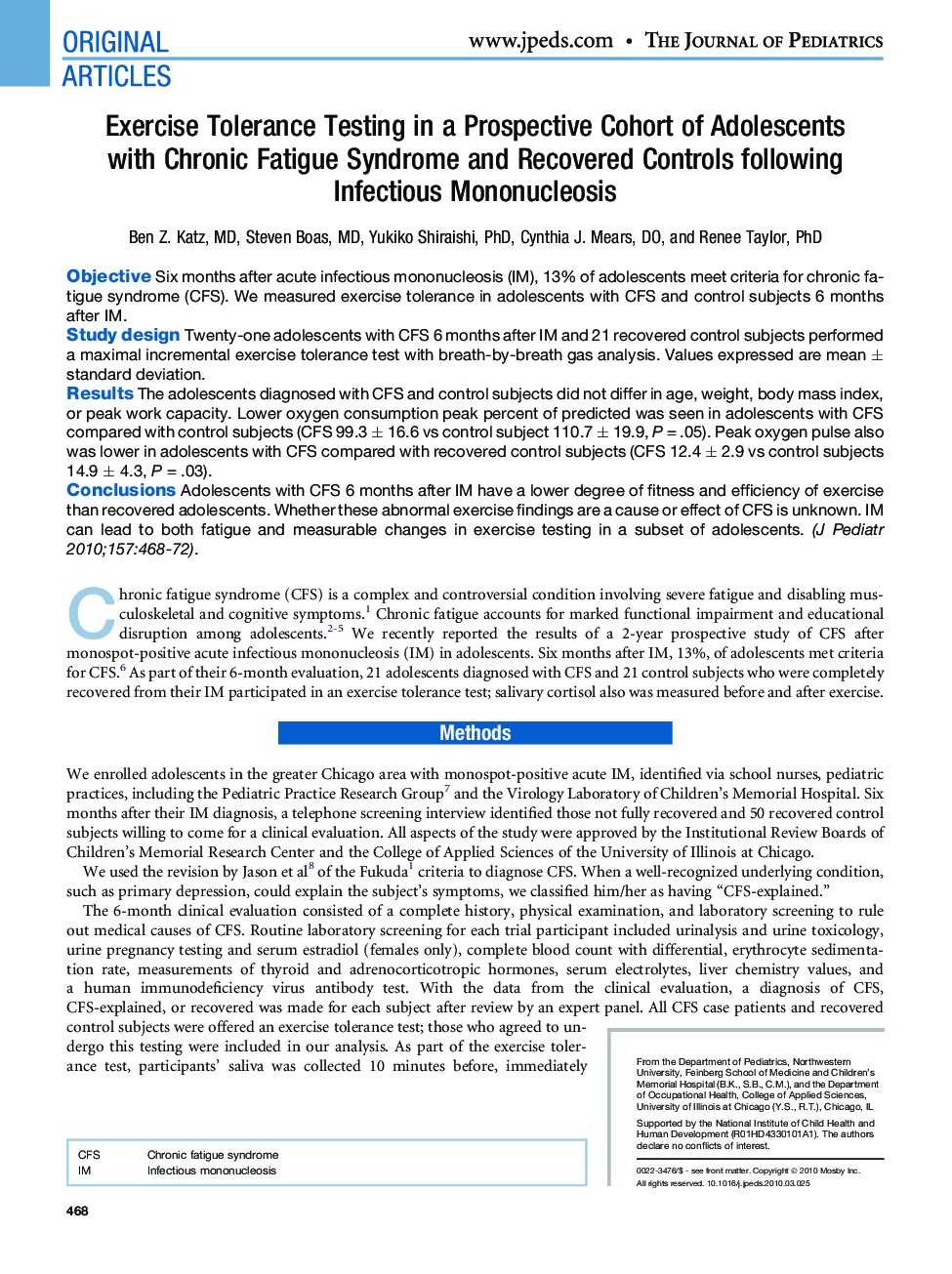| Article ID | Journal | Published Year | Pages | File Type |
|---|---|---|---|---|
| 6225186 | The Journal of Pediatrics | 2010 | 6 Pages |
ObjectiveSix months after acute infectious mononucleosis (IM), 13% of adolescents meet criteria for chronic fatigue syndrome (CFS). We measured exercise tolerance in adolescents with CFS and control subjects 6 months after IM.Study designTwenty-one adolescents with CFS 6 months after IM and 21 recovered control subjects performed a maximal incremental exercise tolerance test with breath-by-breath gas analysis. Values expressed are mean ± standard deviation.ResultsThe adolescents diagnosed with CFS and control subjects did not differ in age, weight, body mass index, or peak work capacity. Lower oxygen consumption peak percent of predicted was seen in adolescents with CFS compared with control subjects (CFS 99.3 ± 16.6 vs control subject 110.7 ± 19.9, P = .05). Peak oxygen pulse also was lower in adolescents with CFS compared with recovered control subjects (CFS 12.4 ± 2.9 vs control subjects 14.9 ± 4.3, P = .03).ConclusionsAdolescents with CFS 6 months after IM have a lower degree of fitness and efficiency of exercise than recovered adolescents. Whether these abnormal exercise findings are a cause or effect of CFS is unknown. IM can lead to both fatigue and measurable changes in exercise testing in a subset of adolescents.
